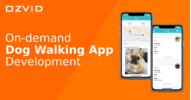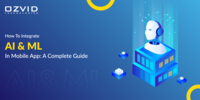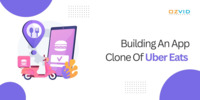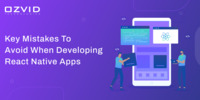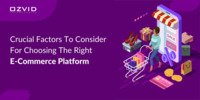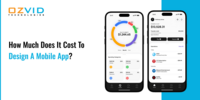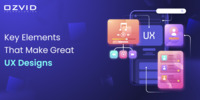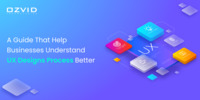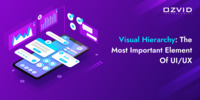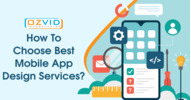- Mar 04, 2025
- Web Design
- 7663
Share this post on:
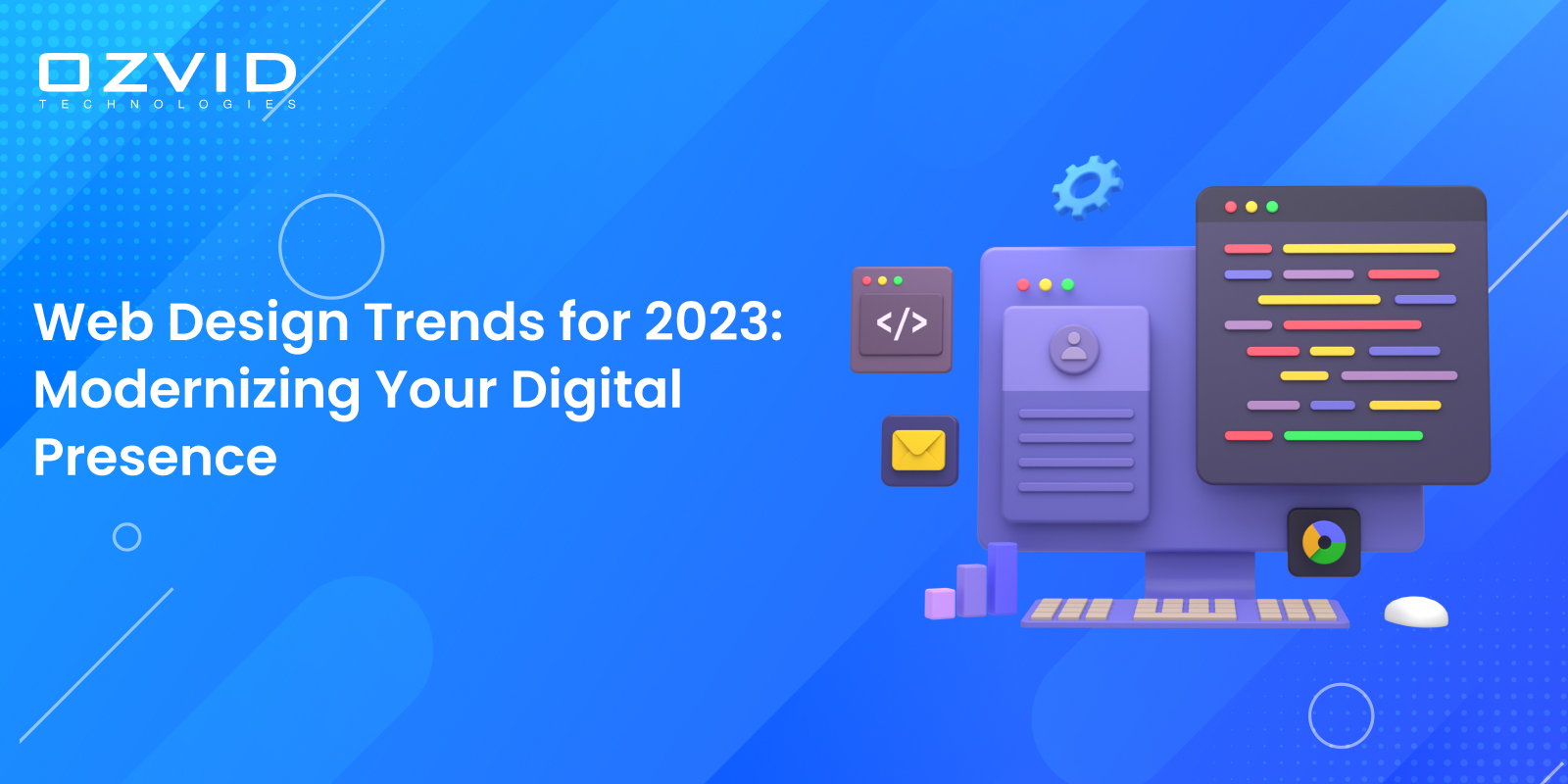
Web design has come a long way since its early days, evolving into a field that encapsulates a range of styles, techniques, and technologies. There have been revolutionary changes and innovations that have kept everyone engaged. These changes have affected almost every business platform, including interface design, functionality, interactivity, visualization, and more.
With the emergence of innovative technologies such as AI, the metaverse, AR, VR, and much more, the competition among businesses has surged. Businesses must opt for practices that help them win the market. One of the main factors that help companies stand out is their web design. It involves planning, development, and several other aspects to create a successful website.
Some key features of good web designs include easy navigation, responsiveness to different devices and screen sizes, and effective use of color, space, texture, hierarchy, balance, contrast, emphasis, movement, pattern, proximity, and unity.
Good web design can improve the rankings of your website and boost sales revenue. It also increases brand recognition and credibility. So, by focusing on user experience design, a company can increase its overall conversion rate, reduce bounce rates, and decrease page load times. Before moving on to trends, let us discuss the benefits you can get from web design.
What are the benefits of web design?
Website development services play a vital role in making a website appealing. An impressive website is essential for promoting products or services globally. However, getting noticed among millions of sites is difficult, making it crucial to develop a website that offers unique functionality.
This will help your website stand out. Here are the significant benefits of effective web design for small businesses:
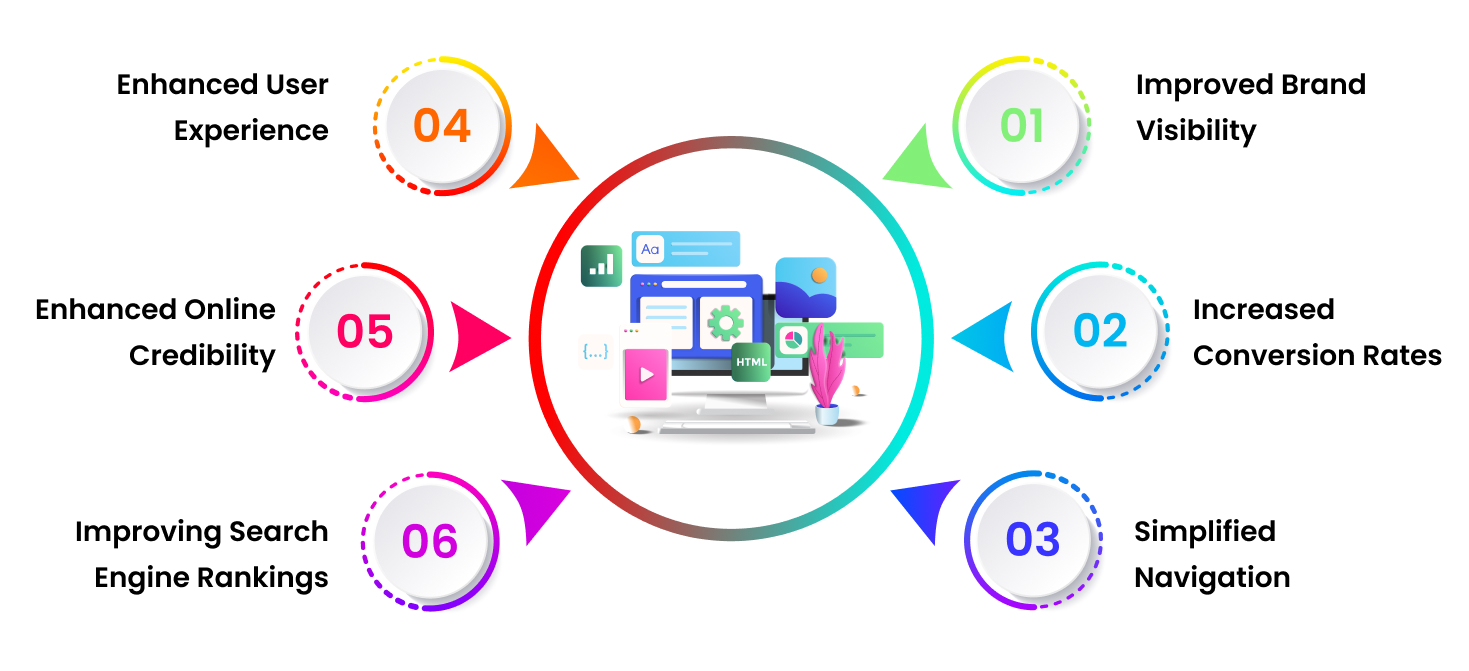
Improved Brand Visibility: An attractive and well-designed website reflects positively on your business, making you appear trustworthy, professional, and established. A website represents the quality of the products or services of any business. It helps business to generate leads and conversions, thereby improving brand visibility.
Increased Conversion Rates: The main goal behind any website design is to boost conversion rates. Skilled developers understand which elements work best to convert casual browsers into leads. Due to this, they incorporate content, eye-catching images, clear calls-to-action, and intuitive navigation menus into their websites.
Enhanced User Experiences: Well-organized websites ensure faster loading times. Also, users leave the website early if it is slow. Thus, optimized designs are essential for maintaining and keeping users engaged for a longer period of time.
Simplified Navigation: Easy navigation enables users to locate the required information seamlessly. A smooth user experience encourages them to explore various sections and subscribe to newsletters, thereby enhancing repeat visits and recommendations to others.
Attracts More Visitors: A good website design is crucial to search engine optimization (SEO). Websites with optimized designs rank higher in search results, leading to increased traffic from potential customers. Good design also decreases bounce rates, which could negatively impact SEO.
Enhancing Online Credibility: A professionally created web design enhances credibility and makes potential customers feel comfortable doing business with you. In addition, it is vital to capture visitors' interest as soon as they click on your website. The first thing visitors see when visiting your website matters the most. If you want to grow your business online, your homepage must look as professional and credible as possible.
Improving Search Engine Rankings: A website with high-quality content helps improve organic search engine optimization (SEO). Improved SEO helps increase search engine rankings, which means more relevant traffic.
More visitors means more chances for making sales and expanding your client base. Organized and structured content makes it easier for human readers and search engines to comprehend and index. Implementing meta tags, alt tags, header tags, internal linking structures, and sitemaps makes search engines like Google understand what information you wish to feature most highly.
The trends in web designs
Here are a few dominating web design trends for 2023:
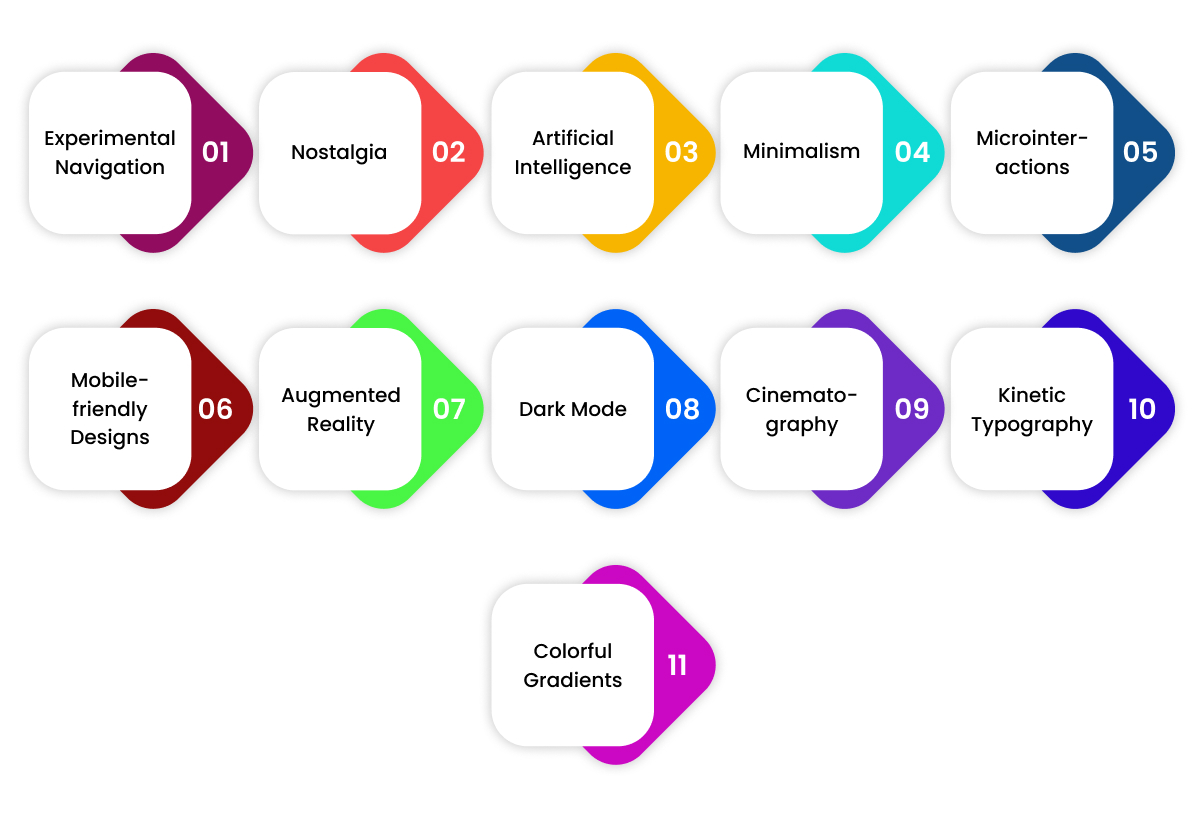
Experimental Navigation:
Experimental navigation refers to web designs that break traditional standards and try something different. These designs often prioritize creativity above usability and use innovative methods to help users navigate the website. Some common examples include unconventional hover effects, hidden menus, abstract icons, unusual typography, split screens, animated scrolling effects, asymmetrical composition, and more.
While experimental navigation styles can result in a unique, memorable experience, they can lead to confusion if not executed properly. Therefore, it is crucial that the designer balances designs with easy navigation and accessibility.
Nostalgia:
Nostalgia is becoming increasingly popular in modern web design. Designers try to evoke feelings of nostalgia among users.
In recent years, businesses have seen a return of retro and vintage-inspired design features. It includes bold color patterns, typography, illustration, and imagery from '80s and '90s pop culture. This trend is used in various element forms within web pages, such as background images, buttons, typography, color schemes, shapes, icons, gradients, and animations.
By incorporating familiar visual cues into web designs, designers aim to trigger warm memories and emotions associated with simpler times, thus making users comfortable. This trend serves as a reminder of happier periods in our lives, which is also an effective way to bring audiences closer to brands and products. Overall, nostalgia is quickly proving itself as an effective tool for creating engaging, immersive experiences online.
Artificial Intelligence:
The integration of artificial intelligence in web design has grown exponentially in recent years. AI brings numerous benefits to designers, businesses, and consumers, helping them streamline processes, enhance performance, improve customer satisfaction, and gain valuable insights.
One way by which businesses can implement AI in web designs is by implementing chatbots powered by natural language processing algorithms. Chatbots facilitate communication between customers and businesses, providing instant feedback and support.
Another application involves personalization, where machine learning algorithms analyze consumer behavior to create personalized product recommendations and advertisements.
In addition, voice interaction technology, made possible by AI speech recognition software, allows users to interact naturally with devices via voice commands, thereby revolutionizing the navigation experience.
Additionally, predictive analytics utilize machine learning algorithms to collect data, which enables marketers to formulate strategies that optimize site functionality, boost revenue streams, and maximize user interactions. Ultimately, AI plays a pivotal role in enhancing user experiences, driving growth opportunities, and transforming industries at a large scale.
Minimalism:
Minimalism is becoming one of the most popular trends in web design. With minimalism, designers turn away from cluttered, complex sites towards simpler, cleaner ones. It conveys messages effectively without distraction from unnecessary details and maintains simplicity, functionality, and elegance.
Minimalistic websites usually feature simple navigational structures that guide visitors to important parts of the site. This style is particularly useful when targeting mobile users and makes viewing and reading content anywhere easy.
However, successful minimalistic design requires careful planning, the selection of appropriate elements, and excellent typography skills, as excessive whitespace can leave sites looking empty. This approach can result in stunning and highly functional websites.
Microinteractions:
Microinteractions are effective when a user is willing to communicate, provide quick feedback, or initiate smaller tasks. They play critical roles in improving user experiences by simplifying processes and strengthening connections between people and digital products.
Microinteractions can be indicators, button shadows, mouse hovers, pop-ups, alerts, etc. They deliver valuable information while being non-intrusive, fast, efficient, and enjoyable. A well-designed micro-interaction captures attention, guides actions, confirms tasks, gives status updates, provides immediate gratification, and establishes trustworthy relationships between users and applications. The successful implementation ensures intuitive usage, promotes brand identity, and increases conversion rates.
Mobile-friendly designs:
Mobile-friendly designs have gained popularity due to the increasing use of smartphones and tablets for browsing the internet.
Nowadays, more people are using the internet through mobile devices than desktop computers. So, it is crucial that websites are optimized. Responsive web design has become vital for companies that want to attract and retain mobile clients.
It allows websites to automatically adjust to different screen sizes and orientations and offer seamless browsing experiences regardless of device type. Moreover, as mobile technology continues to evolve, staying up-to-date with design trends and optimizations will remain necessary for those seeking to build a robust online presence.
Augmented Reality:
Augmented reality (AR) is an innovative technology that superimposes virtual images onto real-world settings and creates seamless experiences for the viewer. AR has seen increased growth in various fields such as gaming, education, and retail, and has gained a lot of popularity in web design.
With advancements in browser capabilities, website developers can now incorporate AR components directly within web pages. This helps eliminate the need for standalone apps.
Dark mode:
Dark mode, or "dark theme," refers to websites designed predominantly with black or very dark colors instead of light backgrounds, which makes reading easier on the eyes at night or in low light conditions. Dark mode not only reduces eye strain but also helps save energy. Moreover, dark mode looks cooler in general and gives websites a sleeker and more modern appearance.
Many tech giants like Apple, Google, Microsoft, Reddit, Twitch, GitHub, and Discord are offering these features to their users.
Cinematography:
Cinemagraphs refer to animated GIF files that loop repeatedly, and one element in the image subtly moves while everything else stays static. They create striking effects, capturing attention and bringing elements to life. Cinemagraphs perform well on social media, driving organic reach and supporting auto-playing and silenced video content. Overall, cinematography represents a fantastic alternative to traditionally static banner advertisements or hero images, helping brands tell compelling stories to attract audiences and boost ROI.
Kinetic Typography:
Kinetic typography refers to animation techniques used to animate text for communication clarity. It serves both artistic and functional objectives and makes words more visually appealing and memorable.
With kinetic typography, graphic designers can generate moving typefaces by utilizing various shape layers and keyframes combinations to produce interesting and captivating designs.
Colorful Gradients:
Over the last few years, colorful gradients have been trending prominently in web design. Traditional flat design has made way for gradients, creating an immersive effect through smooth transitions of shades and hues. From vibrant duotone pairings to multi-color fades, gradient palettes have grown increasingly popular among designers. Websites are now experimenting with new ways to integrate gradients into different design aspects, such as backgrounds, buttons, navigation menus, icons, and logos.
A good gradient should be balanced and blended seamlessly to avoid being too jarring or mismatched. Color choices play a significant role, often drawing inspiration from analogous, monochromatic, complementary, or triadic color schemes. These colorful gradients don't just catch the eye; they help create a cohesive look throughout a website by unifying disparate elements. They also serve practical purposes by acting as guides for UI elements or providing separation between blocks of information. As technology advances and becomes more sophisticated, designers will likely continue exploring novel methods to incorporate gradients in innovative ways while ensuring ease of use and intuitiveness for end-users. Colorful gradients breathe new life into websites, making them feel fresh, modern, and dynamic.
In conclusion:
Responsive design helps keep users from rescaling and scrolling across pages. An excellent web design increases traffic and drives visitors to engage with your site. Companies with sites that offer a positive user experience ultimately gain trust and loyalty through their internet presence. This leads to increased profits and business growth through return visits and word-of-mouth referrals. Good web design matters greatly due to its impact on business goals and objectives.
Are you looking for affordable website design services that deliver high-quality results? Look no further than OZVID Technologies. We have an experienced team of professionals who are specialized in creating visually stunning websites that are highly attractive and optimized for search engines, ensuring maximum visibility on search engine result pages. Our goal is to provide businesses like yours with a competitive edge online by providing professional, customized web designs at budget-friendly prices. Contact us today to learn more.


